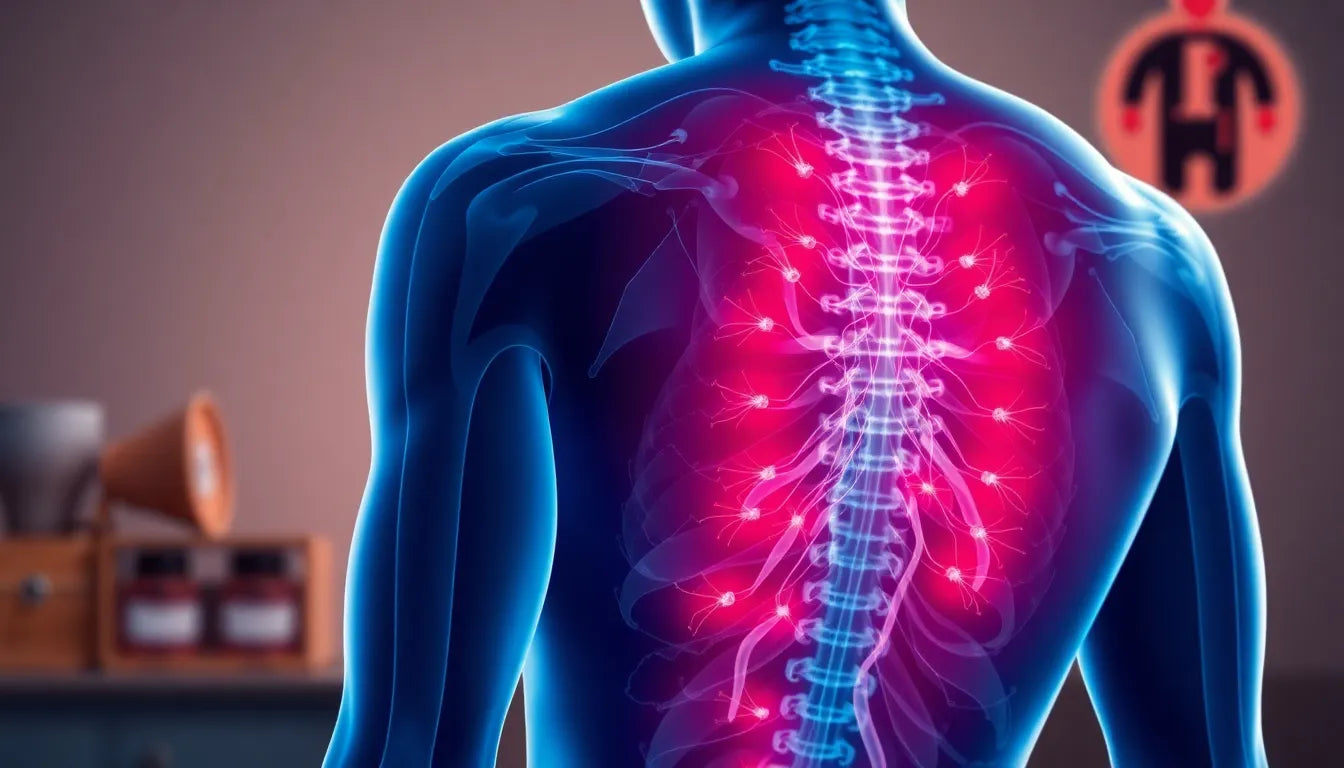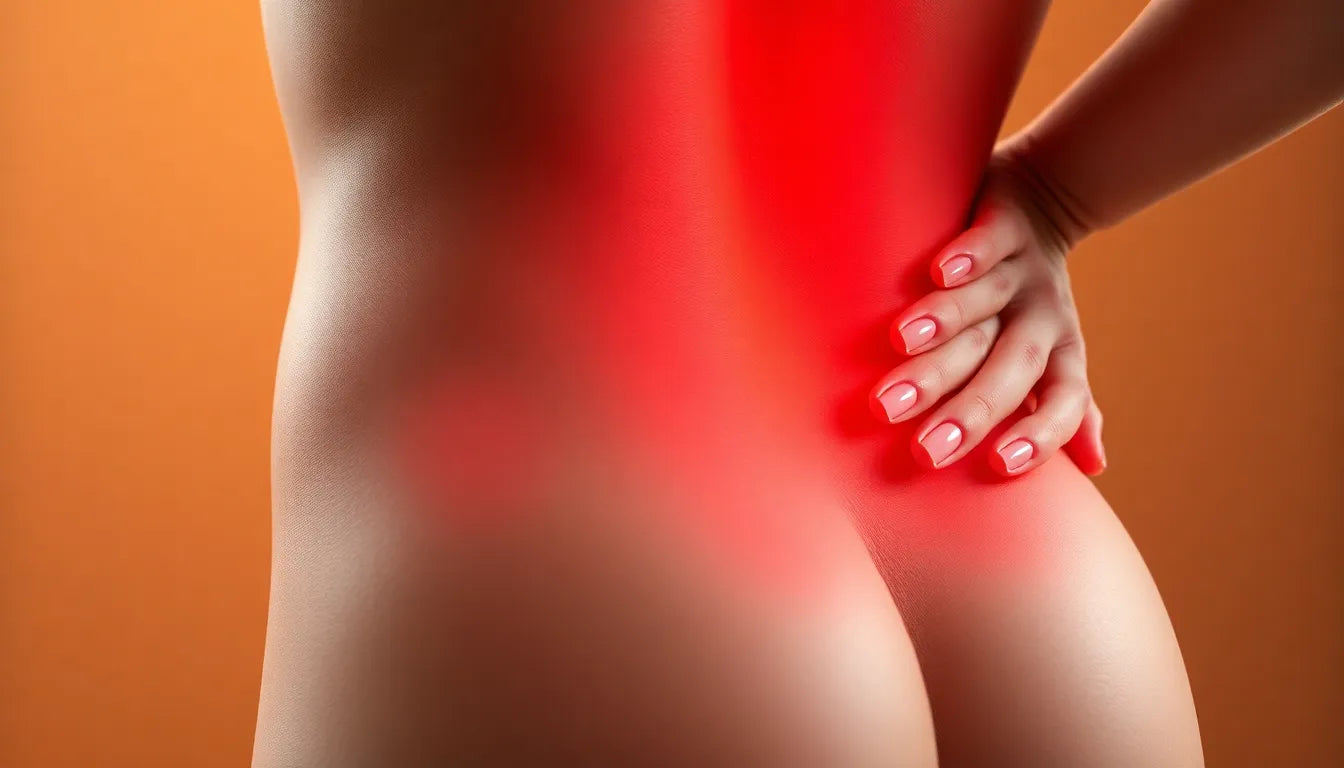As the COVID-19 pandemic continues to impact lives globally, there is a growing concern among Danes about the connection between COVID-19 and back pain. While respiratory symptoms have been the primary focus, many individuals report experiencing back pain as a secondary symptom. This emerging issue is particularly relevant in the context of the pandemic, as understanding the link between COVID-19 and musculoskeletal discomfort becomes increasingly important.
understanding the connection between COVID-19 and back pain
The immune response triggered by COVID-19 can lead to inflammation in muscles and joints, which is a contributing factor to back pain. This inflammation can manifest as myalgia, a generalized muscle pain, affecting both the upper and lower back. For many, this discomfort is exacerbated by symptoms like persistent coughing and prolonged periods of inactivity during illness. The strain from coughing can lead to tension in the upper back, while extended bed rest or reduced mobility can cause stiffness and pain in the lower back.

Women's Posture Shirt™ - Black
Patented technology shirt for improved posture and back pain relief, suitable for work or leisure.
Back pain associated with COVID-19 is not just a physical issue but also has implications for mental well-being. The discomfort can be distressing, especially when coupled with the stress of dealing with the virus itself. Understanding this connection is crucial for developing effective pain management strategies and ensuring a holistic approach to recovery.
why this matters now
Addressing the issue of COVID-related back pain is more important than ever. With the pandemic still ongoing, many individuals are seeking ways to manage secondary symptoms effectively. Back pain, if left unaddressed, can lead to further complications, affecting both physical and mental health. Prolonged pain can contribute to stress, anxiety, and a diminished quality of life, making it essential to find ways to alleviate discomfort.
Moreover, understanding the dual impact of physical and mental health during recovery from COVID-19 is vital. The pandemic has highlighted the need for comprehensive healthcare approaches that consider both aspects. By acknowledging and addressing the issue of back pain, individuals can take proactive steps towards recovery, ensuring they not only overcome the virus but also maintain overall well-being.
In the following sections, we will delve deeper into the prevalence of back pain as a COVID-19 symptom, explore practical advice for managing this discomfort, and provide guidance on when to seek professional help. By equipping yourself with the right information and strategies, you can navigate these challenges more effectively.
covid-19 and back pain: a closer look
The link between COVID-19 and back pain has become increasingly evident as more data emerges. Studies indicate that up to 15% of COVID-19 patients report back pain as a symptom. This symptom is often categorized under myalgia, which refers to generalized muscle pain. Myalgia can be particularly distressing as it impacts both the upper and lower back, contributing to an overall sense of discomfort during the illness.
Different variants of the virus, such as Omicron, have been associated with specific symptoms, including lower back pain. This is often due to the prolonged immobilization many patients experience during their illness. Lack of movement can lead to muscle stiffness and exacerbate existing conditions, making the management of back pain a critical component of COVID-19 recovery.
practical advice for managing covid-related back pain
exercise and mobility
Maintaining mobility is crucial even when battling an illness like COVID-19. Simple exercises and stretches can significantly alleviate back pain and prevent stiffness. Gentle yoga poses, such as the cat-cow stretch, can help maintain flexibility and reduce tension in the back. Additionally, incorporating short walks or light physical activities into your daily routine can improve circulation and promote healing.
ergonomics and posture
For those working from home or spending extended periods in bed, paying attention to ergonomics and posture is essential. Using supportive chairs and aligning your workstation to promote good posture can help reduce strain on your back. When resting, consider using pillows to support the natural curve of your spine, which can alleviate pressure and discomfort.

Lumbar support belt
Adjustable belt offering relief and stabilisation for lower back pain due to tension or inactivity.
nutrition and hydration
A balanced diet and adequate hydration play a vital role in supporting muscle health and reducing inflammation. Consuming foods rich in omega-3 fatty acids, such as salmon and walnuts, can help combat inflammation. Additionally, staying hydrated ensures that your muscles remain supple and less prone to cramping. Incorporating anti-inflammatory foods like turmeric and ginger into your meals can also provide relief from back pain.
By adopting these practical strategies, individuals can effectively manage COVID-related back pain and enhance their overall recovery experience. In the next section, we will discuss when it might be necessary to seek professional medical help and explore the psychological aspects of dealing with chronic pain during a pandemic.
when to seek professional help for covid-related back pain
While many individuals find relief from back pain through home remedies and self-care, there are instances where professional medical help is necessary. If back pain persists beyond several weeks, intensifies, or is accompanied by other concerning symptoms such as fever or unexplained weight loss, it is crucial to consult a healthcare provider. Persistent pain could indicate underlying conditions that require medical intervention.
Healthcare professionals can provide personalized treatment plans that may include physical therapy, medication, or other interventions to address the specific causes of back pain. Early intervention can prevent further complications and promote faster recovery, ensuring that individuals do not suffer unnecessarily.
the psychological aspect of pain
Chronic pain, including back pain associated with COVID-19, can have significant psychological effects. The stress and anxiety that accompany prolonged discomfort can exacerbate the perception of pain, creating a cycle that is difficult to break. It is essential to address these mental health implications as part of a comprehensive approach to recovery.
Coping strategies such as mindfulness, meditation, and cognitive-behavioral therapy can be beneficial in managing the psychological impact of chronic pain. Additionally, maintaining social connections, even virtually, can provide emotional support and alleviate feelings of isolation. Prioritizing mental well-being is a crucial component of the recovery process, helping individuals manage pain more effectively and improve their quality of life.
frequently asked questions
is back pain a common symptom of COVID-19?
While not the most common symptom, back pain can occur in a significant number of COVID-19 patients due to inflammation and muscle strain. It is often associated with myalgia, which affects a portion of those infected with the virus.
what exercises can help alleviate COVID-related back pain?
Gentle stretches, yoga, and low-impact exercises such as walking can help maintain mobility and reduce pain. These activities promote circulation and flexibility, which are essential for managing back discomfort.
how long does COVID-related back pain last?
The duration of COVID-related back pain varies among individuals. Some may experience relief soon after recovering from the virus, while others may have prolonged symptoms, particularly if they were inactive during their illness.
can lifestyle changes help prevent back pain during COVID-19?
Yes, maintaining an active lifestyle, ensuring proper ergonomics, and following a balanced diet can help prevent and manage back pain. These changes support overall health and reduce the risk of developing musculoskeletal issues.
By addressing both the physical and psychological aspects of COVID-related back pain, individuals can take proactive steps towards relief and recovery. Understanding when to seek professional help and implementing effective coping strategies are key to managing this challenging symptom. As we continue to navigate the impacts of the pandemic, prioritizing health and well-being remains essential.
Kilder
- Ada Health. (2021). "Back Pain and COVID-19: What You Need to Know."
- Gavi, the Vaccine Alliance. (2021). "Why Does COVID-19 Cause Back Pain?"
- OSF HealthCare. (2021). "Muscle and Joint Pain from COVID-19."
- Sundhedsstyrelsen. (2021). "Senfølger efter COVID-19."
- NHS. (2021). "COVID-19 Symptoms and What to Do."
- Sundhed.dk. (2021). "COVID-19 (SARS-CoV-2)."
- Helsebiblioteket. (2021). "Senfølger etter mildt forløp av COVID-19."


















